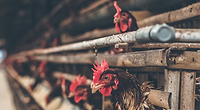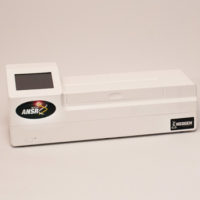Researchers Developing Rapid, Sensor-Based Pathogen Detection Technology Backed by Decision-Support System

Image credit: Shutterbug75 via Pixabay
With a $5 million grant from the U.S. National Science Foundation (NSF) Convergence Accelerator Program, a multidisciplinary research team led by the University of Missouri (MU) is developing new technology to rapidly detect and control Salmonella and other foodborne pathogens throughout the poultry supply chain.
The 19-member team is headed by Mahmoud Almasri, Ph.D., Associate Professor of electrical engineering and computer science at MU, and includes investigators from MU, the University of Notre Dame, and Lincoln University who have expertise in engineering, poultry and food science, public health, and supply chain management. The end goal is to reduce the instance of foodborne illness in consumers.
The project is especially relevant in light of the U.S. Department of Agriculture’s (USDA’s) ongoing efforts to reduce instances of salmonellosis attributable to poultry, which involves major regulatory changes proposed in a draft framework, such as declaring Salmonella an adulterant in not-ready-to-eat (NRTE), breaded and stuffed raw chicken products.
At present, the gold standard for pathogen testing in the food industry takes at least 24 hours to produce results—but the rapid results enabled by the research team’s sensor-based technology, in combination with their decision support system, could have the potential to change the industry status quo and influence policymaking.
Dr. Almasri explained that his team’s solution is capable of producing results in one hour or less. It involves collecting real-time data from multiple portable sensors and uploading that data into a transformative sensor-enabled decision support system (SENS-D). In their project, the team is also leveraging advanced analytics and artificial intelligence (AI) to develop descriptive, predictive, and prescriptive capabilities that improve risk mitigation.
An example of how the researchers see their system revolutionizing the food industry is in helping ensure food safety between the packing plant and a store shelf. With results produced so quickly and backed by a decision support system, findings could help increase the understanding of the impact of time and temperature during distribution and transit.
The sensors are still in prototype development, but the research team is already exploring how the technology can be applied to other foodborne pathogens besides Salmonella. When the technology is ready for real-world use, the researchers intend to execute workforce education and training initiatives with MU Extension to help industry implement the new tools.
Looking for a reprint of this article?
From high-res PDFs to custom plaques, order your copy today!









